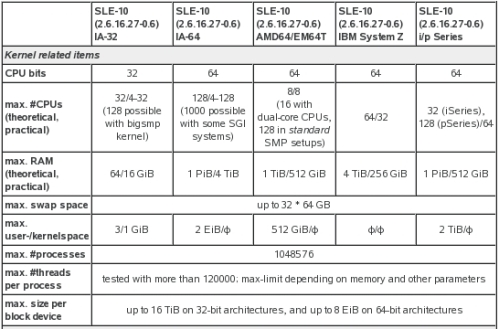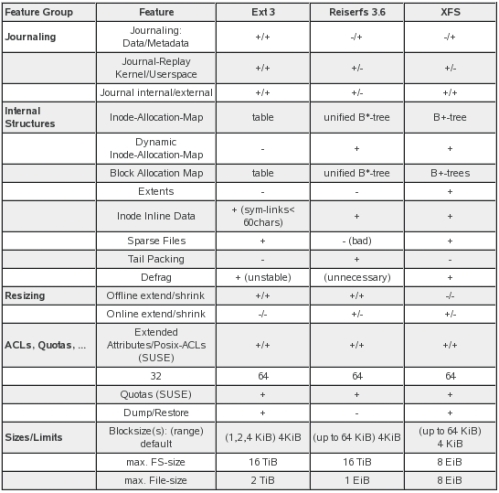Overview
Do you really understand the shift in models that has occurred with the introduction of Enterprise versions of Open Source products? Let’s take a look at Subscription and License models and why one might make more sense for your needs than the other.
Proprietary Licenses
First off, most if not all traditionally commercial software is licensed with a proprietary license that has serious and onerous restrictions. For example, Microsoft and many other companies (including Novell) have large portfolios of proprietary software that has a EULA (End User License Agreement) which among other things typically states that the vendor has all the rights in the licensing situation, there are no warranties or guarantees and effectively you can lose the right to use that software/code for almost any type of violation of the License terms.
Don’t get me wrong, I’m not saying that Proprietary Licenses are wrong, heck, I have books on the market and those are certainly not just free for the taking, intellectual property is important, but so is how it’s presented and protected. Imagine that you are company, official organization or country that uses such proprietary software for your needs and suddenly the vendor exercises the right to deny you that use of their software, what can you do? More on protecting yourself from this situation later.
Open Source Licenses
There are many sources for understanding the Open Source and Free Software licensing models, suffice it to say that my explanation will be a wrapup and condensation of all those sources.
Effectively, the Free Software and Open Source licenses are a guarantee of openness, and not an attempt to restrict peoples usage of the code by control and charging for access. For example, if a government grant is used to write a particular project’s code, there are those who very convincingly argue that the code from such a funded project should at the very least be Public Domain, ie free for all to take and to whatever they should wish with, commercial, public or internal.
Some proponents of Free Software and Open Source would make it more restrictive, that all important software should be licensed under a model where if you make any changes or modifications to the code that those changes must be made freely and easily available to all who want it, and that your changed version of the code must be labeled clearly as such.
The very fact that the licenses such as the GPL make it easy to understand how you can use and benefit from the code licensed under that model makes it much more likely that those who need the most unfettered access to the code will pick that model to run their mission critical processes on.
The Protections Free Software/Open Source Gives
When you use Open Source-licensed products, you have to realize that if you follow the license’s terms, you cannot be denied usage of that code under any circumstances. It’s controversial to use such examples, but very illustrative to say that you can use Free Software and Open Source for any purpose, such as a large corporation’s datacenter, a small mom & pop hardware store, a revolutionary movement, a gun shop, a community bank or an abortion clinic. The key is to realize that there is no danger that you will lose your ability to use the software, no matter what business or activity you conduct with the software, as long as you keep the terms of the license agreement. That’s not to say that various law enforcement or regulatory authorities won’t disagree with WHAT you DO, but you can’t lose the rights to the code just because someone disagrees with your chosen profession or method of making money.
Where Subscriptions Matter
When you have Open code being used for business or commerce, there is a certain stress that comes to make sure that the code is properly maintained, updated, patched, fixed and supported. For example, if you really like what openSUSE does, the product really makes it easy to use for your business, but you don’t really have the staff to maintain it and keep up with the patches and fixes, then it makes sense to use a supported Enterprise edition, such as SUSE Linux Enterprise Server or Desktop, where the whole burden for support, patch/fix and updating of the code base and collected distribution falls upon the vendor (Novell/SUSE) instead of your already overworked staff.
Subscriptions are a very good deal for a commercial entity, they offer many things such as the above, but also when you’re subscribed to SLE, you have the most effective upgrade protection (my, how Microsoft has almost ruined that phrase, hmm?) that you can get.
SLE products have a 7 year life cycle, from the initial release to the effective end of life, so a subscription to SLES for example would entitle you to use any supported/in lifecycle version that you wanted, they’re all supported and being updated until they reach end of life.
The Bottom Line
Oh, and don’t forget one of the best things about subscriptions with SUSE Linux Enterprise, we offer subscriptions on the physical machine, the entire machine, even virtual instances of the same OS on that machine, so one subscription gives you the right to run as many virtualized instances as you can possibly pack on that machine. We also offer blade-rack subscriptions, where a bladcenter/bladesystem is subscribed at the chassis level, usually breaking even about blade 5 or so, giving you substantial savings.
CFO’s LOVE subscription models, they are flat, easily negotiable and usually stay at a particular level for several years, all traits in a contract that endear it to a CFO’s oft-flinty heart.
RossB
 now officially released and available. Here are some of the highlighted improvements and links to more info:
now officially released and available. Here are some of the highlighted improvements and links to more info: Virtualization (Xen 3.1, VirtualBox, KVM,…)
Virtualization (Xen 3.1, VirtualBox, KVM,…)







You must be logged in to post a comment.